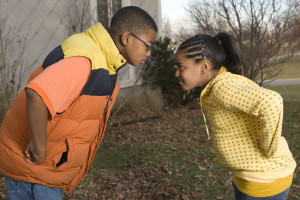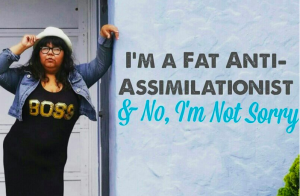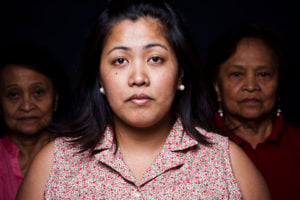“Seriously? Seriously!”
When I hear either of my daughters take the word “seriously” from a reasonably volumed, one-word question to a high-pitched, broken-voiced shriek of a statement, I know that conflict is officially in the mix.
The girls are less than two years apart, and their personalities are very different. My oldest is an assertive, outside voice type of person. She’s curious, talkative, very expressive – and when something isn’t working for her, she doesn’t hesitate to let that be known. My youngest daughter is polar bear cool. She’s a laidback, generally quiet, “leave me alone with my art and my books” type of person. She’s funny, quirky – and quick to etch out the parameters of her personal space.
As you might imagine, the differences in their personalities make conflicts a near-daily occurrence. They view the world differently, they approach communication differently, and like most people in the world, they don’t like their opinions to be challenged or their preferences to be ignored.
Not much different than adulthood, right? Save for a better sense of context, minimal egocentrism, and far more life experience, there’s really just one main thing that marks the difference between adult-to-adult conflict management and adult-to-child conflict management, and that one thing is the desired outcome.
When dealing with adults, the desired outcome tends to be solely about finding a solution. When dealing with children though, we’re not just looking to solve the problem of the moment – we’re also trying to show them how to approach problems like that in the future.
As a parent, my approach to conflict isn’t always based on trying to find a solution to the conflict.
Instead, I see it as my job to assess the situation and then make choices that may include facing, or even encouraging, conflict so that the important conflict management life skills can be introduced, reinforced, and practiced in a safe environment.
But we ourselves are susceptible to the same feelings of anxiety and fear when it comes to conflict.
So the challenge often lies in how to nurture healthy self-governance and personal leadership in our children when we may not be practiced in those skills ourselves.
So let’s explore some examples of ways we can turn moments of conflict – whether that’s between us and our children, or among our children – into opportunities.
Because if we’re clear on some ways to handle both, we stand a better chance at helping our children (and ourselves) practice healthy decision-making when it comes to conflict management.
Why We Need to Make Room for Adult-to-Child Conflict
This is specifically for those times when you, yourself, are part of the conflict.
It’s way easier (for me, anyway) to take a sound approach to conflict management if I’m not one of the conflicting parties. If I’m stepping in to help manage a conflict between my daughters, or between them and one of their friends, it’s so easy for me to see simple alternatives, or to draw examples from stuff I learned in school (like cognitive dissonance) to offer up a myriad of reasonable solutions.
But when I’m one of the people in the middle the conflict, I’m much more likely to bark my assertions, express my discomfort, and then lock myself in my bedroom to watch mixed martial arts fights and pretend to be whoever’s winning.
Since I’ve realized that becoming Anthony Pettis won’t actually help me solve any conflicts, I’m learning how to make room for conflict instead.
Here’s an example:
Daughter knows she’s responsible for washing dishes and wiping counters some time between after dinner and before 10pm. Mom steps out of her room at 10:30pm to find dishes in the sink, and Daughter chilling on her iPad.
When I’m not making room for conflict, I tend to take these instances as personal affronts – as if my daughter hatched a plan not to wash dishes so she could fight against the system (which would be her dad and me).
I personalize it, and I talk to her about starving children with no dishes to wash, and grandmothers she’s lucky she didn’t have because a full sink of dishes would equal an epic ass whoopin’, and so on. Basically, I bring up fear-focused examples of consequences for her choice to not wash the dishes.
That approach solves my frustration in the moment, and it empties the sink full of dishes. But it doesn’t resolve the real issue, which is my feeling that she’s not being considerate about the distribution of tasks among our household – taking her life and privileges and the people around her for granted, basically.
That recognition of the real issue is often the first step toward turning conflict into opportunity.
Taking time to process your feelings and think through what you want to convey helps you manage anxiety about having to address the issue. It’s a practice run, in a sense, and it allows you to see yourself and to decide if you’re comfortable with how you respond.
That is a conflict management skill: stepping outside of your feelings, not by avoiding them, but by facing them so you can feel through the issue (inconsideration) and not just the symptom (a sink full of dishes).
When I face my feelings and hold myself responsible for helping my daughters to grow and evolve, I recognize that I don’t want to frighten my children into doing the things I want them to do. Because if I can manipulate them in that way, so can any other adult. I don’t want to socialize them solely based on fear of an undesirable outcome.
Instead, I want them to see how they can manage their time and energy by trusting my (and their father’s) judgment when they don’t agree with a task (like dishwashing), and thinking through ways to get to what they want (free time) by addressing their responsibilities, which include chores.
When I take the time to align my desired outcome with my action, I get really clear that the bark and threaten approach is more about my frustration than their skill building. And when I’m clear-headed, I do things that help my daughters to better manage themselves.
For this particular ongoing issue, I had the girls create a dishwashing chart. That chart shows who is responsible for washing dishes on which days, and has a reminder about the 10pm deadline. The chart is on the fridge, and I reference it once or twice throughout the day. That lessens over time, and I’m okay with the process.
I also remind them about their ability to influence their environment by choosing their actions.
In this instance, it means that I replace empty threats (like physically and emotionally abusive ass whoopin’ techniques I’d never actually employ) with a reminder that if primary tasks aren’t addressed (which includes dish washing), then luxury tasks (like iPad time) are removed or shortened. Their dad and I are consistent with this, so there’s no conflicting message, and they get to see how their choices (to wash dishes on time or not) affect their environment (free time availability).
So, in this instance, a set of life skill related actions, as opposed to fear-focused threats might be:
- Reminding my daughters a few hours before the deadline
- Being honest and telling them that I don’t like washing dishes either, but that it isn’t always about what we like when it comes to shared responsibilities
- Suggesting that they set a time to wash the dishes each night so it becomes an easy routine
- Asking them what they plan to do with their non-task related time (which prompts them to look at their task list for the week)
- Express my feelings without apology, but also without tying in threats that I won’t actual follow through on
- Offering an encouraging comment (“You’re on it today, honey!”) when they do what they’re responsible for doing
- Reminding them that it’s okay to forget to wash the dishes, but if it becomes a pattern, they lose privileges
- Being consistent with the consequence for not completing the task (every single time they don’t wash the dishes, and there is no logical reason, we do whatever we said we’d do)
- Helping them come up with their own ideas for consistently remembering to wash the dishes before 10pm
- Think of some options that may work for you, too. And feel free to use some of the suggestions above.
As long as you’re coming from a place of skill building over fear-focused reactions, you’re creating an opportunity for your child to understand and eventually utilize good conflict management skills.
For Those Moments When It’s Them, Not You
We couldn’t address conflict management in parenting without examining the instances when our children are arguing or fighting with each other. This is for when you’re watching your children in the middle of a rising conflict.
Here’s an example:
One child wants to go across the street to the playground, but the other child wants to stay home and play Minecraft. They know that they both have to go to the playground, because they’re not allowed to go alone, so what starts out as a basic “What shall we do for fun right now?” conversation becomes a full-blown argument about fairness, fun-ness, and frustration.
The first thing is not to assume that you need to step in.
Some skills are best taught by doing, not by watching. I could swim the length of a thousand pools while my daughters watched, but if I really wanted them to learn how to swim, they’d have to get into the water and move themselves. Such is the case with conflict management.
Sure, they can learn from the examples their father and I offer at home, but there is no substitute for feeling one’s feelings and learning how to manage and act upon those feelings.
Let them regulate themselves for a while. Watch and listen, and maybe learn a bit more about their communication styles and feelings.
The second thing is to consider how you can help them manage their dilemma.
Let’s say it escalates and you need to step in. Remember that this is not your issue, so your solutions aren’t necessarily the best ones. Consider ways you can get involved without taking over.
If none of the children are physically hurting each other, or throwing hurtful words at each other, oftentimes you can help step in without taking over just by being a clarifying voice for each child.
For example, you could say, “So, Ethan, are you saying that you played Minecraft with your sister yesterday and earlier today because she asked you to?” Then, if that is the truth, you can ask them questions that might guide them toward seeing the fairness in going to the playground. Or you can ask them to name all of the options they can think of wherein both of them would be happy.
Sometimes they don’t come up with a fair option, but the questions you ask might inspire a child to bring up the real reason they don’t want to do a particular thing.
The point here is twofold: Don’t assume you have to step in to resolve the issue, and don’t assume you already know exactly what issue they are facing.
Children are people; they’re just younger. They can still have fears and beliefs that blur their choices and that call for self-inquiry and compassion.
When we don’t place ourselves in the middle of a conflict, and we don’t assume that children can’t resolve conflict without us, we give them space to develop their own skills, and we hold their hands from a safe distance so they can grow into themselves.
Choose Skill Over Consequence, Every Time
When it comes to life lessons, there’s a difference between nurturing a skill and enforcing a consequence.
Creating opportunities for a child to feel confident in the middle of conflict is more about practicing the skill than being guided by fear-based consequence.
When we try to make our children avoid conflict, or when we punish them for being part of a conflict, we rob them of the chance to practice vital life skills like self-evaluation, strong listening skills, and confidence in expressing their thoughts.
But we have options.
We can choose to help our children see the life lessons and character builders inside each instance of conflict. In doing so, we give children space to learn from disagreement, to feel free to change their minds, to not fear what they don’t understand, and to not panic when they’re opinions or perspectives are challenged.
And if we can manage – as a society of parents, principals, aunts, teachers, and bus drivers – to raise children who become adults who don’t fear what they don’t understand, and who are not encumbered by their insecurities around communication, we could really get to know each other as people who choose curiosity and confidence over fear.
[do_widget id=’text-101′]
Akilah S. Richards is a Contributing Writer for Everyday Feminism. She is a six-time author, digital content writer, and lifestyle coach who writes passionately about self-expression, womanhood, modern feminism, location independence and the unschooling lifestyle. Connect with Akilah on Instagram, Tumblr, or her #radicalselfie e-home, radicalselfie.com. Read her articles.
Search our 3000+ articles!
Read our articles about:
Our online racial justice training
Used by hundreds of universities, non-profits, and businesses.
Click to learn more





















